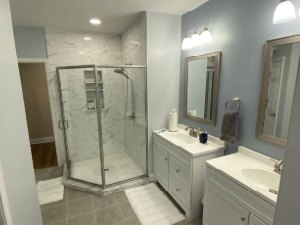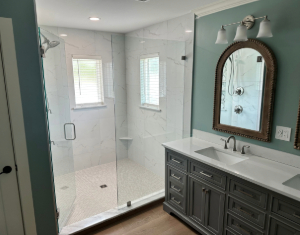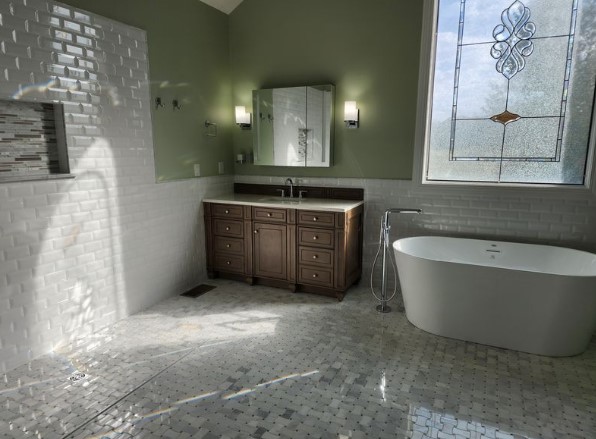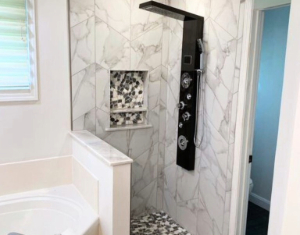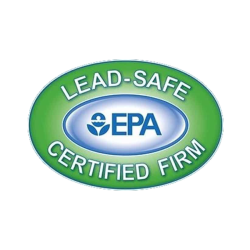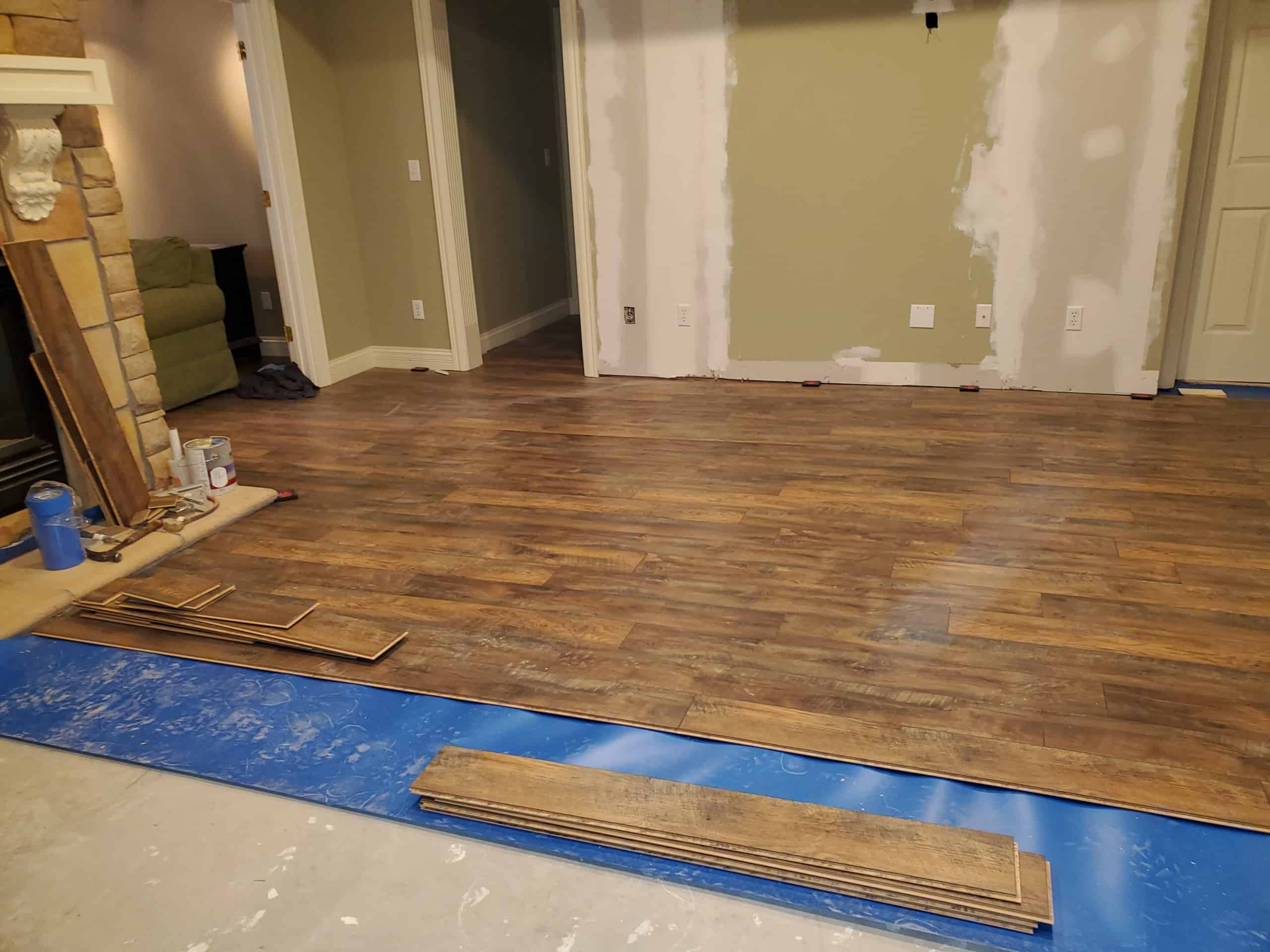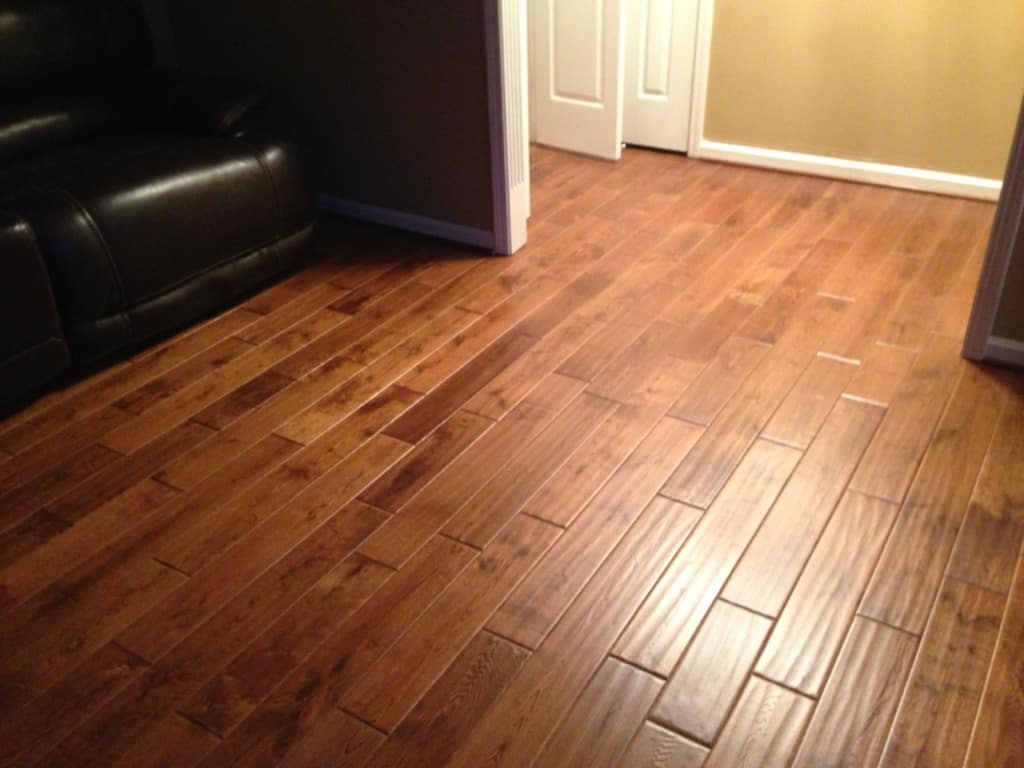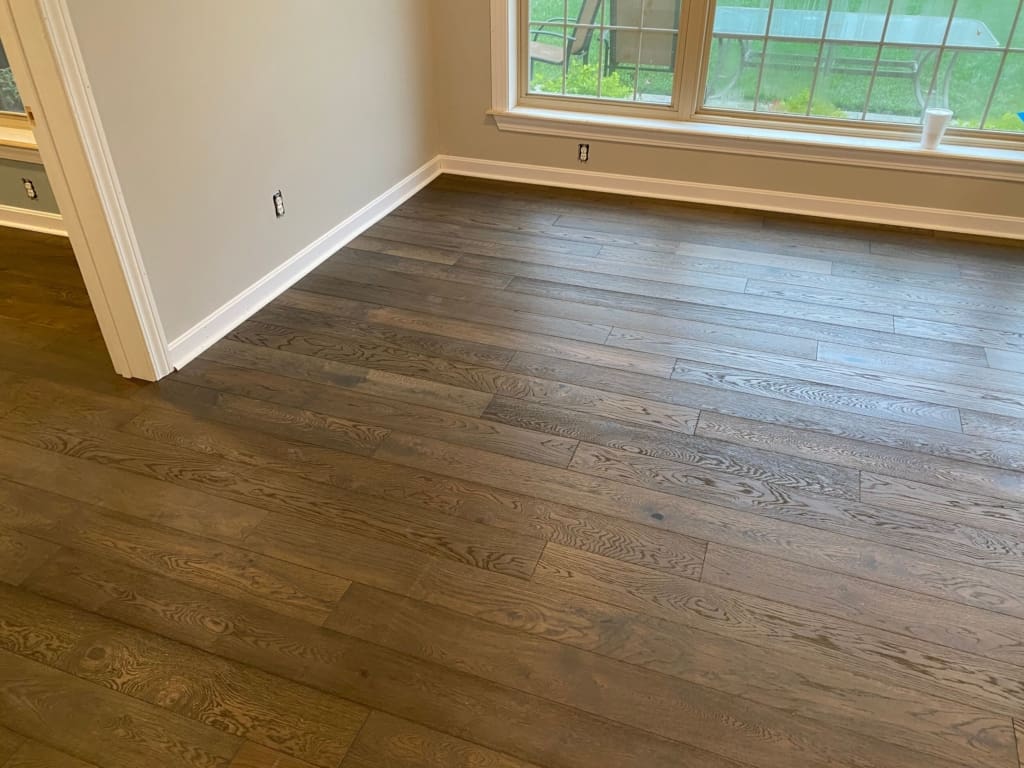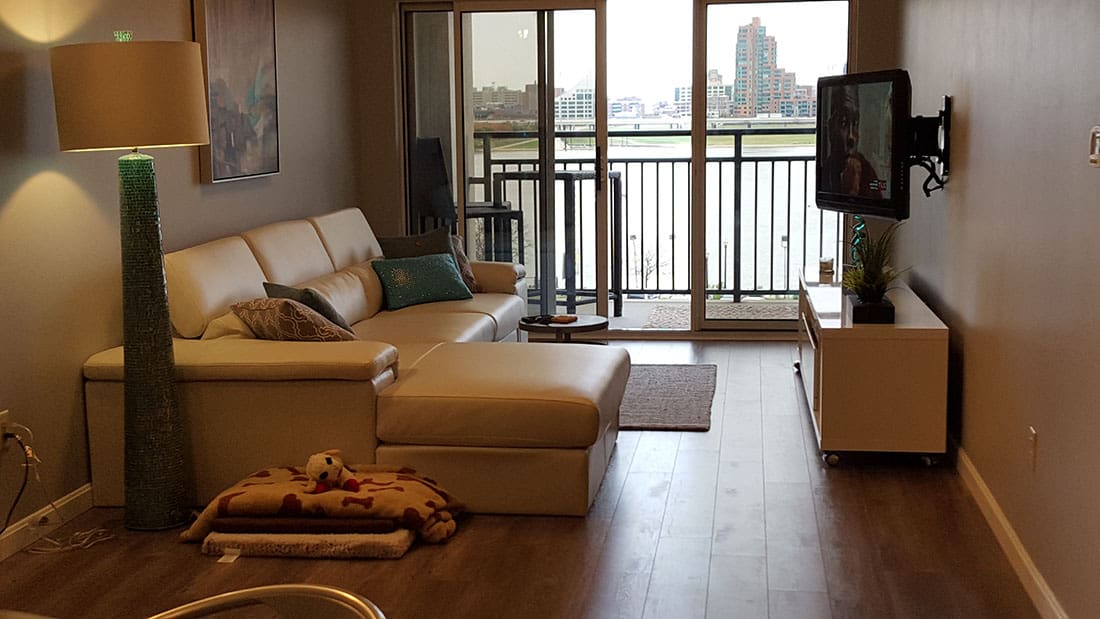
Do I need underlayment with laminate flooring? In a word, yes. It is possible to lay laminate flooring without underlayment, but it is a terrible idea. This protective layer of padding mutes the sound of walking on the flooring, creates a moisture barrier for the floor or subfloor beneath it, and insulates. If you are installing laminate flooring to avoid tearing out an existing hardwood floor, underlayment will help protect the hardwood beneath it from moisture and scratches. You should put down a good underlayment if you ever intend to refinish the old, valuable wood. But do you absolutely have to buy underlayment for a DIY laminate flooring installation? No. Laminate can be installed without it, but once again, it’s a terrible idea. Your floor will be unnecessarily loud, cold, and susceptible to moisture.
Get Underlayment Already Attached
However, some laminate flooring already has the underlayment attached to the underside of the planks. This is the only time it is ok to skip a roll of underlayment for your flooring project. If you want to skip dealing with putting down underlayment, pick up this type of laminate flooring. Do not install additional underlayment with this type of laminate flooring. This may result in your interlocking floor coming apart by allowing too much movement. If you are installing this laminate with underlayment attached in a basement, be sure to get a vapor barrier that does not include extra cushioning for the above reasons.
What is Underlayment?
Underlayment is usually a plastic, closed cell foam. However, it is also available made from cork and felt. These different underlayments have different applications. It often comes in a 3 foot wide 100 square foot roll, but also comes in a fold out variety that is arguably easier to install because it is not curved from being rolled up. Underlayment comes in a variety of thicknesses, depending on how much protection you desire. If you’re on a tight budget, the budget foam gets the job done. However, if you want to maximize noise reduction and insulation, the thicker the better. In addition, if there are any imperfections in your subfloor, a thick underlayment can help keep these from affecting your laminate flooring and being visible in the finished floor. We recommend at least a 6mm thick underlayment, depending on the details of the project. Buy the best underlayment you can.
How Does Underlayment Protect Against Moisture?
Underlayment creates a barrier between your floating laminate flooring and the subfloor. Laminate has some moisture resistance, but spills should be cleaned up immediately to prevent swelling and other damage. The barrier is more to protect the subfloor beneath the laminate. If you don’t use underlayment, and a big spill gets down into the plywood, it will swell and make your floor uneven. If the moisture is persistent, such as a leak, your subfloor may rot. This is very dangerous. Stepping on a section of rotten floor can result in falling through it. This is one vital reason why underlayment is so important. Please do not take any unnecessary risks to save a few dollars installing your new floor.
For areas with a lot of moisture, such as a basement, a vapor barrier needs to be used in addition to the underlayment. Laminate flooring works fine in a basement, but the moisture from being underground can ruin laminate without a vapor barrier and underlayment. Once again, if you have purchased laminate with the underlayment already attached, do not use a vapor barrier with extra padding. 2 in 1 underlayment with a vapor barrier is also available, but we advise against it. It’s better to purchase two separate materials that are both very good at their purpose than one material that is mediocre at two purposes.
Can I Use Carpet Padding In Addition to or Instead of Underlayment?
Absolutely not. Carpet padding is not designed to be compatible with laminate flooring. It will not add any moisture protection, noise protection, or insulation to your floor. In addition, it will make installing your laminate much more difficult. Do not use carpet padding for anything other than carpet, but we always advise getting rid of carpet. You can never truly get it clean. It holds pet dander, dust, and mites.
If your subfloor is in perfect shape, you don’t mind a cold noisy floor, and you are installing the flooring in a room that does not have any moisture concerns, you may choose to skip the underlayment. But we strongly advise against it. Your subfloor won’t stay perfect forever, spills happen, and winter comes. However, sometimes, the budget is the budget and you have to do what you have to do. We all have different priorities. If this is the case, consider finding a lower cost vinyl floating floor instead of laminate. If you simply don’t want the added step of installing underlayment, please install laminate flooring with the underlayment already attached.

